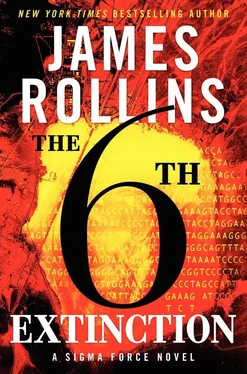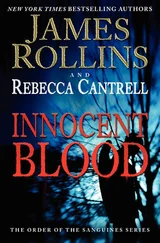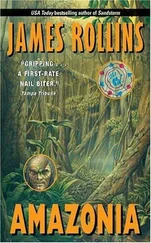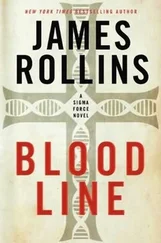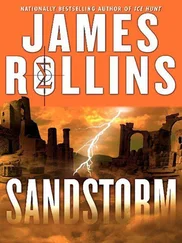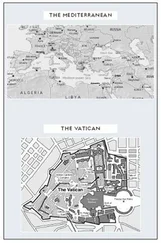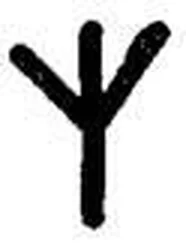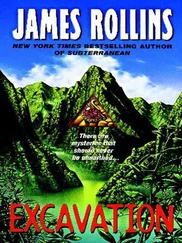Before he could ask, Gray felt a mother of all headaches flaring behind his eyes — but it wasn’t only him.
Kowalski clutched the sides of his head, groaning. “Motherfu—”
Jason leaned on his knees, looking ready to vomit.
Harrington spoke through a tight jaw. “We’ll be through the worst of it in another few seconds.”
Gray breathed deeply, close to losing his breakfast, too. Then slowly the pain subsided; his back molars stopped vibrating in his skull. He could now guess the source of the sudden agony.
“LRAD?” he asked.
Long Range Acoustic Device .
Harrington nodded. “We have a series of sonic cannons pointed continually into the cavern at the edge of the station. As a buffer to keep everything as far back as possible. We’ve found a mix of ultrasonic and infrasonic frequencies to be an effective deterrent down here. Better than guns.”
Gray leaned a hand against the wall, steadying himself, glad the gondola was so well insulated. He could only imagine the raw intensity of that sonic deterrent outside.
Jason pointed between his feet to a glass hatch in the floor. Through the window, a chair could be seen below, bolted inside an enclosed undercarriage canopy. A weapon with a large conical dish was racked in front of the seat.
“That’s another LRAD cannon, isn’t it?” Jason asked.
Stella nodded. “You can also swap it out for a machine gun, if need be.”
“Once we’re beyond the buffer zone,” Harrington warned, “we may need both to protect the lift if we run into any serious trouble.”
Trouble from what?
Out the windows ahead of them, the world was pitch-black. Behind the gondola, the station’s lamp-lit bulkheads continued to recede into the darkness, reflected in the boiling lake. Then the tracks followed a bend in the cavernous tunnel and even that last light vanished.
Harrington stepped to a cabinet and opened a door. From hooks inside hung a row of heavy goggles — night-vision gear. “Put these on. I’m going to extinguish our cabin lights before we attract any attention. Then I’ll ignite our exterior infrared lamps.”
Gray tugged the gear over his eyes as Harrington doused the lights inside the gondola. His goggles picked up the small specks of light from diodes on the conveyor’s control panel, but beyond the windows, the world remained dark. In this sunless and moonless underworld, even night-vision was useless.
Then the professor kicked on the exterior lamps, and beams of infrared penetrated that endless darkness. Though the wavelength was invisible to the naked eye, the goggles turned those beams into the brightest spotlights — illuminating what the darkness had hidden a moment ago.
Gray gaped as the view opened ahead of him.
Kowalski simply shook his head. “Something tells me we’re gonna need bigger guns.”
12:14 P.M.
Jason pressed his palms against the glass, taking in the sights as the armored gondola slowly rode its rails across the roof of this new world.
“Have you ever seen anything like this?” Stella asked.
“No… not like this.”
The cavernous tunnel was tall enough to hold the Statue of Liberty without her torch ever scraping the rows of stalactites that hung from the roof like jagged fangs. Below, a snaking river slowly churned, fogged in steam. All around the gondola, a forest of massive columns formed a maze.
As their cage passed one, Jason noted stone branches jutting up from the pillar and joining the roof like support buttresses. Up close, the pillar’s rough surface appeared strangely corrugated, almost like bark.
Then he looked even closer.
“It is bark,” he suddenly realized aloud, glancing back as the column receded behind him.
“We’re moving through a petrified forest,” Stella said. “Remnants of a lost time when Antarctica was green and flush with life.”
“They’re Glossopteris , semitropical trees,” Harrington said. “Over the past decades, archaeologists have uncovered three such ancient forests on the surface of the continent. Massive petrified stumps with scatters of fossilized leaves around them.”
“But nothing as well preserved as down here,” Stella added with a small note of pride.
Jason remembered a detail about Darwin’s tale of the ancient Fuegian map: how on that chart, this place was marked by a grove of stylized trees. It was that promise of green life in this icy land that drew the Beagle to its ill-fated journey here.
Could this be that forest? Were these petrified trees what the Fuegians had actually drawn on their map?
Fascinated, Jason continued his bird’s-eye survey of the terrain. As he watched the river below, something large humped out of the water and vanished. At first he thought it was a trick of the eye; then another appeared, and another.
“Something’s in the water,” he said.
Gray joined him. “Where?”
Before Jason could point, a large pale crustacean-like spider climbed out of the shallows and up onto a bank. It was the size of small calf, with a pair of large pincers in front and spikes along its carapace. Then those spikes scurried off the creature’s back and appeared to be scouring the black algae from the damp rocks.
A dark shadow swooped down from a hidden nest among the stalactites and landed atop the tips of its clawed leathery wings. A sharp beak speared down and plucked up one of those small feeders, then stabbed down for another.
The larger crustacean defended its young and scrabbled after the attacker, its claws snapping. Avoiding a fight, those wings snapped out again, and with a single beat, the aerial predator burst upward. It flew in a wide arc, passing close to the gondola. It had a six-foot wingspan, its body covered in fine black scales; its head looked crocodilian, except for the sword-like beak.
“That’s a smaller example of the species,” Harrington commented. “We named them Hastax valans , Latin for flying spear. We’ve encountered individuals three times that size. That pale lobster is Scalpox cancer or chiseled claw.”
“What else is out there?” Commander Pierce asked.
“So much more, an entire complex ecosystem. We’re still trying to classify much of it. So far, we’ve identified over a thousand new species, from the lowly Lutox vermem —”
“A type of mudworm,” Stella interjected.
“—to the elephant-sized Pachycerex ferocis .”
Jason could not keep the mix of wonder and horror from his voice. “Amazing.”
Gray knew Harrington’s partner — Dr. Hess — had been scouring the globe for examples of shadow biospheres, looking for radical new forms of life.
Looks like he found it in spades here .
“This is the first environment of its kind,” Harrington declared. “A unique xenobiological ecosystem.”
Jason frowned. “Xenobiological?”
Stella explained, revealing her master’s degree in evolutionary biology. “It’s an ecosystem based on a biological system foreign to the rest of life on this planet. It’s why we established a taxonomic classification system that incorporates an X into all the Latin names, to distinguish the various new species as xenobiological .”
Jason could not take his gaze from the sights below.
Outside the gondola, the flying predator had circled and looked ready to dive again upon that pale Scalpox and its young. It swept low over the water, stirring the mists. From the river — as if drawn upward by its wake — luminous globes the size of bowling balls shot upward. Jason shifted off his night-vision goggles for a moment. The globes scintillated in electric shades in the darkness, reminding him of the bioluminescent creatures found in deep-sea trenches. Only these glowing lures rose from larger bodies hiding underwater: huge eel-like creatures undulating through the river.
Читать дальше
